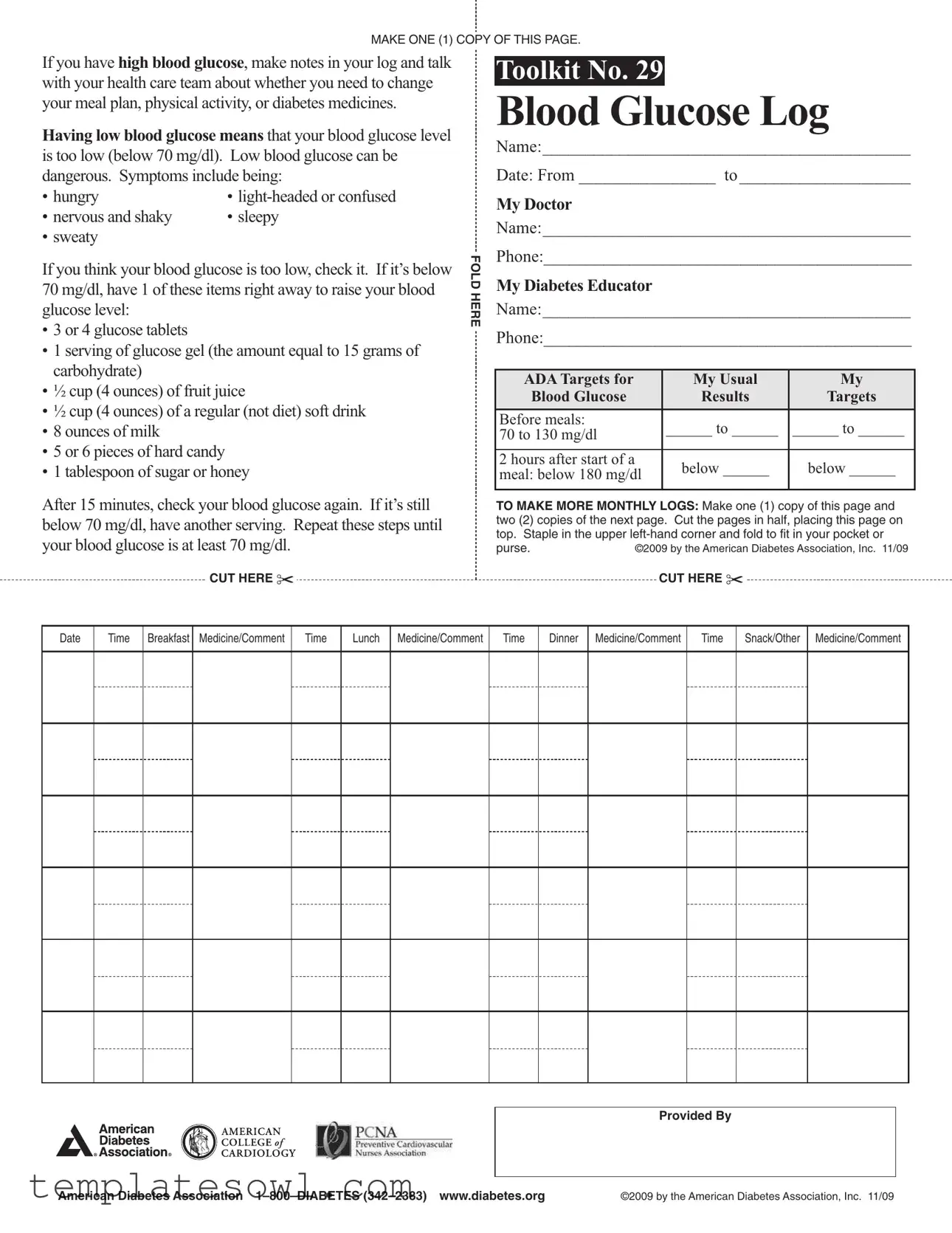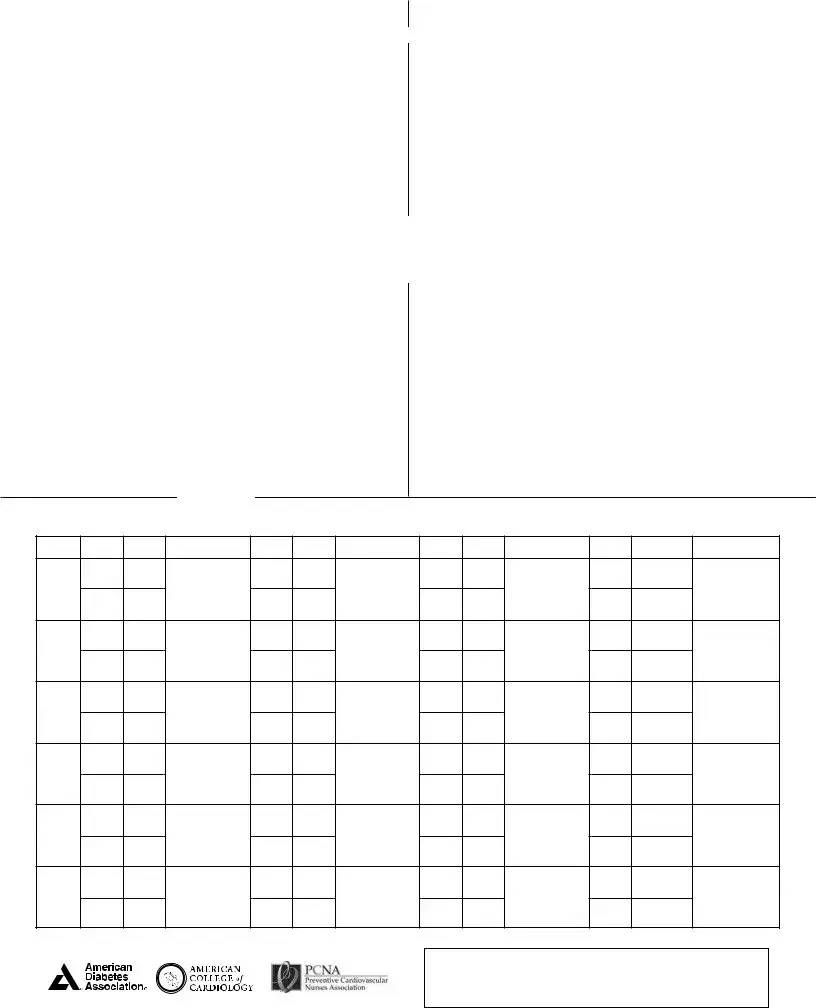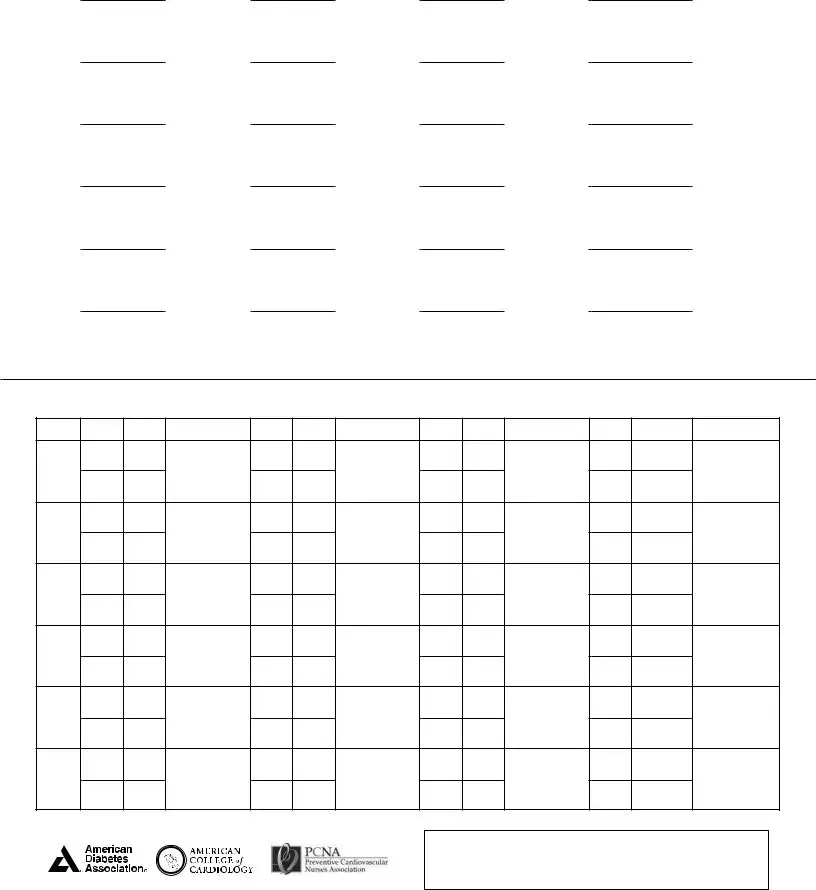What is the Blood Glucose Log form used for?
The Blood Glucose Log form is designed to help individuals manage their diabetes effectively. By recording your blood glucose levels, meals, and medications, you can track how different factors affect your blood sugar. This information is crucial for making informed decisions about your diet, physical activity, and medications in collaboration with your healthcare team.
How do I use the Blood Glucose Log form?
To use the Blood Glucose Log, you simply fill in the required fields with your name, dates, and contact information for your healthcare provider and diabetes educator. Each day, record the time, your blood glucose reading, meals consumed, and any medications taken. This structured approach allows for easier analysis and discussions with your healthcare team.
What should I do if my blood glucose is too high?
If you notice that your blood glucose levels are high, it’s essential to make detailed notes in your log. Seek advice from your healthcare team on whether you should adjust your meal plan, physical activity levels, or diabetes medications accordingly. Keeping track of your levels helps in making necessary adjustments to maintain a healthier balance.
What are the signs of low blood glucose?
Low blood glucose, defined as below 70 mg/dl, can be dangerous. Symptoms may include feeling hungry, light-headedness, confusion, nervousness, shakiness, sleepiness, or sweating. Recognizing these symptoms early can prevent serious complications, so it's crucial to monitor your levels regularly.
What should I do if I experience low blood glucose?
If you suspect your blood glucose is too low, check your levels immediately. If they are still under 70 mg/dl, consume something high in carbohydrates to raise them promptly. Options include glucose tablets, fruit juice, milk, or regular soft drinks. After 15 minutes, check your blood glucose again and repeat this process if necessary.
How can I make more monthly logs?
To create additional monthly logs, simply make one copy of the initial page and two copies of the subsequent pages. Cut each page in half and stack them with the first page on top. You can staple them in the upper-left corner and fold the logs to fit in your pocket or purse for easy access.
What targets should I aim for in my blood glucose results?
The target range for blood glucose levels before meals is typically between 70 to 130 mg/dl, while two hours after starting a meal, it should be below 180 mg/dl. These ranges can help guide your management plan and keep your diabetes under control.
Who can I contact for support regarding my diabetes?
You can reach out to your healthcare provider or diabetes educator for any questions or concerns related to managing your diabetes. Additionally, resources such as the American Diabetes Association provide valuable information and support. They can be reached at 1–800–DIABETES (342–2383) or through their website for further assistance.
Is there a proper way to store my Blood Glucose Log form?
It is best to keep your Blood Glucose Log in a safe and easily accessible location. Consider storing it in a designated spot, such as a binder or folder, where you can easily refer back to it during your medical appointments. Keeping it organized will facilitate better discussions with your healthcare team about your progress.


